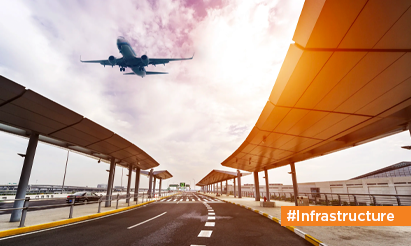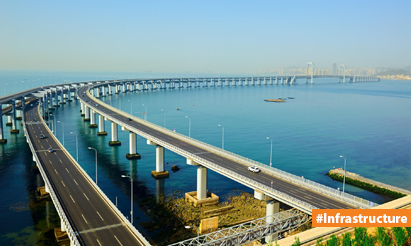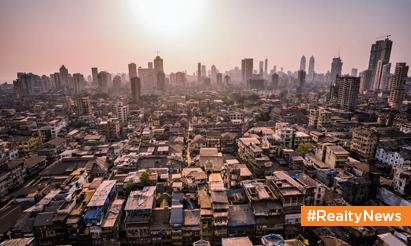Delhi-Mumbai Expressway: Navigating the Route, Tracking Status, and Anticipating Real Estate Impact
The Delhi-Mumbai Expressway, often touted as India’s ambitious infrastructure project, is set to redefine the connectivity landscape between the two major metropolises. This article delves into the intricacies of the Delhi-Mumbai Expressway, providing readers with insights into its map, route, current status, and the potential impact it could have on real estate in the region.
Delhi-Mumbai Expressway: A Transformative Project
Map and Route Overview:
- Starting Point (Sohna, Haryana):
- The Delhi-Mumbai Expressway begins near Sohna in Haryana, strategically positioned to enhance connectivity from the outskirts of Delhi.
- Key States Traversed:
- The expressway traverses through multiple states, including Haryana, Rajasthan, Madhya Pradesh, Gujarat, and Maharashtra. This expansive coverage is designed to bring seamless connectivity across diverse regions.
- Endpoint (Mumbai, Maharashtra):
- The expressway concludes its journey in Mumbai, Maharashtra, marking the culmination of an extensive road network that aims to reduce travel time between the two major cities significantly.
Key Features and Status Update:
- Length and Design:
- Spanning over 1,250 kilometers, the Delhi-Mumbai Expressway is envisioned as a controlled-access highway with world-class infrastructure. It is designed to reduce travel time between Delhi and Mumbai from the existing 24 hours to approximately 12 hours.
- Greenfield vs. Brownfield Sections:
- The project involves both greenfield (newly constructed) and brownfield (upgrading existing highways) sections, catering to different regional requirements. This combination aims to strike a balance between speed of execution and minimizing environmental impact.
- Operational Phases:
- The construction of the expressway is divided into multiple phases. Some sections are already operational, providing a glimpse of the future connectivity, while others are in various stages of development.
- Expected Completion Timeline:
- While specific timelines may be subject to change based on construction progress, the Delhi-Mumbai Expressway is anticipated to be fully operational within the next few years. Regular updates from the National Highways Authority of India (NHAI) and other relevant authorities provide insights into the ongoing status of the project.
Impact on Real Estate: Anticipating Opportunities and Challenges
1. Enhanced Connectivity and Regional Development:
1.1 Opportunities:
- The expressway is expected to drive economic growth and development along its route. Regions that were previously considered distant or less accessible may witness increased demand for real estate, both residential and commercial.
1.2 Challenges:
- Rapid development can bring challenges such as increased urbanization and potential strain on local infrastructure. Urban planning and sustainable development practices will be crucial to mitigate adverse effects.
2. Infrastructure-Led Growth:
2.1 Opportunities:
- Proximity to the expressway may boost the demand for logistics and warehousing facilities, creating opportunities for real estate development in the industrial and commercial sectors.
2.2 Challenges:
- Overreliance on certain sectors may lead to localized economic fluctuations. Diversification of the local economy will be essential for sustained growth.
3. Residential Real Estate Boom:
3.1 Opportunities:
- Regions along the expressway route may experience a surge in demand for residential properties. Increased connectivity to major cities could make these areas attractive for homebuyers seeking a balance between urban amenities and a more relaxed lifestyle.
3.2 Challenges:
- Unplanned development could lead to challenges such as inadequate infrastructure, congestion, and potential strain on natural resources. Local authorities must proactively address these issues to ensure sustainable growth.
4. Commercial Hubs and Special Economic Zones (SEZs):
4.1 Opportunities:
- The Delhi-Mumbai Expressway is expected to catalyze the development of commercial hubs and SEZs along its route. These zones could become magnets for businesses, attracting real estate investments in office spaces and commercial complexes.
4.2 Challenges:
- Balancing economic growth with environmental sustainability will be critical. Proper zoning and adherence to environmental regulations will be essential to avoid adverse impacts on the ecosystem.
5. Tourism and Hospitality:
5.1 Opportunities:
- Improved connectivity may lead to increased tourism along the expressway route. This could spur the development of hotels, resorts, and other hospitality infrastructure, presenting investment opportunities in the real estate sector.
5.2 Challenges:
- Preservation of cultural and ecological heritage in tourism hotspots will be crucial. Striking a balance between development and conservation will be necessary to ensure the long-term sustainability of the tourism sector.
The Delhi-Mumbai Expressway represents more than just a road; it is a conduit for transformative change in the Indian real estate landscape. As the project unfolds, investors, developers, and local authorities must collaborate to harness the opportunities it presents while addressing potential challenges.
Delhi-Mumbai Expressway’s impact on real estate is not confined to the immediate vicinity of the route; it ripples through regions, creating diverse opportunities and challenges. Strategic planning, sustainable development practices, and community engagement will be pivotal in ensuring that the expressway becomes a catalyst for balanced and inclusive growth.
Indian investors, developers, and policymakers stand at the intersection of this transformative journey, where decisions made today will shape the future of real estate along the Delhi-Mumbai Expressway. By embracing a holistic and forward-thinking approach, stakeholders can navigate this expressway of opportunities, creating vibrant, sustainable, and thriving communities along its path.




